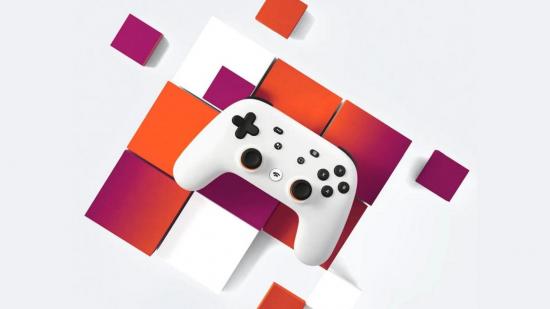October 9, 2019 Updated with further information regarding negative latency.
Google Stadia will be faster and more responsive than local gaming systems in “a year or two,” according to VP of engineering Madj Bakar. Thanks to some precog trickery, Google believes its streaming system will be faster than the gaming systems of the near-future, no matter how powerful they may become. But if the system is playing itself, does that really count?
Speaking with Alex Wiltshire in Edge magazine #338, Google’s top streaming engineer claims the company is verging on gaming superiority with its cloud streaming service, Stadia, thanks to the advancements it’s making in modelling and machine learning. It’s even eyeing up the gaming performance crown in just a couple of years.
“Ultimately, we think in a year or two we’ll have games that are running faster and feel more responsive in the cloud than they do locally,” Bakar says to Edge, “regardless of how powerful the local machine is.”
This would be achieved using Google’s homegrown streaming tech, which it’s been teasing ever since Stadia was first announced late last year with Project Stream. The company believes its tech is capable of overcoming the hurdles presented by over-the-web gaming, despite its extensive web of datacentres sitting potentially hundreds of miles away from a user.
Specifically Bakar notes Google’s “negative latency” will act as a workaround for any potential lag between player and server. This term describes a buffer of predicted latency, inherent to a Stadia players setup or connection, in which the Stadia system will run lag mitigation. This can include increasing fps rapidly to reduce latency between player input and display, or even predicting user inputs.
Yes, you heard that correctly. Stadia might start predicting what action, button, or movement you’re likely to do next and render it ready for you – which sounds rather frightening.
So does that count as the fastest system if technically some clever algorithm is anticipating your actions for you? We’ve received a heads-up (thanks!) that negative latency, powered by a datacentre’s worth of compute silicon, may offer future cloud gaming systems flexibility to anticipate the likely action of a user, and ensure a speedy response ready for that potential eventuality. Whether or not a player takes the anticipated path or another entirely remains dependent on local player inputs.
This flexible approach is possible due to the sheer mass of power available to a cloud gaming service, the likes of which is far beyond that of any local system. But it still relies on the technology maturing to a point that enables game devs to implement it.
Google is plenty confident Stadia will delight users, and in my own experience with the tech back at E3 I didn’t notice any actions going awry. However, that was in a Google-approved environment, and we’ll have to wait until Stadia’s launch this November to find out how efficient Stadia’s streaming algorithms are in the real world.
